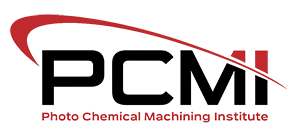Precision Photo Chemical Machining Experts
BWP PHOTOMETALS is a leading photo chemical machining firm in North America, which means we produce thin metal parts to tight tolerances and to our customers’ exact specifications.
Photo Chemical Machining, also known as Photo Chemical Milling, Photo Etching, Chem Milling and Photofabrication plays a valuable role world-wide in the production of precision parts, tooling, equipment labeling, signage, and decorative items.
Photo Chemical Machining Process
Metal Preparation
Before coating the metal with photoresist, the metal is thoroughly cleaned to remove all dirt, rust, greases and oils to achieve adhesion to the photoresist coating.
Photoresist Coating
Photoresists are UV light-sensitive polymers that may be applied to the metal as a liquid by dip coating, flowing, roller-coating or electrophoresis. Dry film photoresists are applied by hot roller lamination.
Photoresist Processing
The coating of the metal sheet with photoresist sensitizes it. When this sensitized metal is put into the double-sided phototool and then exposed to UV light on both sides, an image is formed in the photoresist. It is then developed in a liquid formulation to form an adherent, durable image on both sides of the metal.

The coating of the metal sheet with photoresist sensitizes it. When this sensitized metal is put into the double-sided phototool and is exposed to UV light on both sides, an image is formed in the photoresist. This is then developed in a liquid formulation to form an adherent, durable image on both sides of the metal.
Stripping & Inspection
The final process of photo chemical machining is to strip off the resist, ensure that the metal is clean and that the dimensional specifications requested have been satisfied.

PHOTO CHEMICAL MACHINING BENEFITS
Low Cost Tooling
Low Cost Modification
Photo Chemical Machining allows the engineer or designer to carry out practical experiments at a minimum cost. Short runs are possible ensuring cost effective improvements are easy to implement.
Prototype to Production
Photo Chemical Machining can be used to make one or a million parts, with the same tooling used every time. This allows the engineer or designer to develop their concept from prototype to pilot to full production quickly and easily.
Metal Properties Unaffected
Photo Chemical Machining carries the unique advantages of leaving the internal structure of the metal unchanged. Neither does it affect the properties of the metal with regard to hardness, grain structure, or ductility of the metal.
Burr Free
Some processes leave finished parts with a burr which is detrimental to the functioning of the parts. Photo Chemical Machining produces burr free components, thus removing the need for costly time-consuming de-burring activities.
Identification Marks
Company logos, part numbers, even serialization or other identifying marks can easily be etched into the surface during manufacture at no additional cost.
Photo chemical machining is often a superior alternative to other popular manufacturing processes such as stamping, punching, EDM production and laser or waterjet cutting and BWP PHOTOMETALS are the experts you need to produce your project in a timely manner and at a fair price. Request a quote on photo chemical machining for your project.


